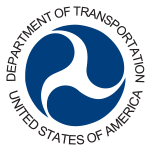Audit Reports
Delays in Meeting Statutory Requirements and Oversight Challenges Reduce FAA’s Opportunities To Enhance HEMS Safety
Summary
The Helicopter Emergency Medical Services (HEMS) industry safely transports over 400,000 patients in the United States each year, frequently in challenging conditions, including night flight, poor weather, low visibility, and landing at unfamiliar accident sites. The industry has grown significantly in the last few decades, with more than 1,500 specialized air medical helicopters used by 75 different companies in 2014. As the industry has grown, so has the number of accidents, and the Federal Aviation Administration (FAA) and Congress continue to seek ways to enhance safety in the HEMS industry. FAA issued a final HEMS rule in February 2014, and Congress passed the FAA Modernization and Reform Act of 2012 (FMRA). In light of these efforts, the Ranking Member of the House Aviation Subcommittee requested that we review FAA’s progress in improving air ambulance safety.
While FAA’s recently issued HEMS rule is a good first step toward realizing FMRA goals, continued delays in finalizing the remaining congressional mandates affect FAA’s ability to focus its accident reduction efforts and limit the effectiveness of safety initiatives. Additionally, until FAA updates key oversight policies and obtains meaningful safety data to analyze for trends, it will not be well positioned to effectively oversee a rapidly expanding HEMS industry. We made five recommendations to strengthen FAA's oversight of HEMS operators; FAA concurred with two recommendations and partially concurred with three.
